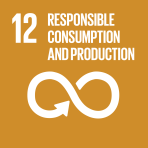- 主页
- Sustainable Development Goals
- Responsible Consumption and Production
 Responsible Consumption and Production
Responsible Consumption and Production
Recommendations
Below are proposed recommendations for the consideration of the government of the Republic of San Marino. The recommendations are organized by priority area and are sequenced along a timeframe which spans from short-term (0-2 years) to medium (2-5 years) and long-term (>5 years).
Introduction
The Manual of Tests and Criteria contains criteria test methods and procedures to be used for the classification of dangerous goods according to the provisions of the United Nations Recommendations on the Transport of Dangerous Goods Model Regulations as well as of chemicals presenting physical hazards according to the Globally Harmonized System of Classification and Labelling of Chemicals (GHS). It therefore also supplements national or international regulations which are derived from the Model Regulations or the GHS.
Development priorities and challenges
Drawing on the analysis provided in the previous chapters and the feedback from Government officials this chapter outlines the main urban development challenges by priority area.
Legislative and institutional framework for sustainable development
Known as the oldest country in the world the constitution of the Republic of San Marino dates back to the 16th century. It has a parliamentary government consisting of a 60-member Grand and General Council elected every five years under a proportional representation system. The Council is responsible for the approval of the budget and selects two heads of state every six months known as Captains Regent who may not be selected again until three years have elapsed. The Captains Regent serve concurrently as co-head of State (i.e. holds equal powers) and presides over meetings of the Council as well as those of the Congress of State (cabinet).
Funding and financial framework
Dwindling tax revenues reflected the economic crisis that engulfed the Republic of San Marino in 2020. Tax revenues’ share in GDP decreased from around 16.1 per cent in 2019 to 14.5 per cent in 2020 (IMF 2022).47 Compounding the impact of the revenue losses is the growing public expenditures as the Government reallocated funds to finance its COVID-19 emergency response package for supporting the health sector and the most vulnerable segments of the population (see annex 4).
Overall Perspective of Utilization Rates of COMESA Member States of Unilateral and Contractual Trade Preferences - South-North Direction of Trade
This section provides a general overview of COMESA utilization rates as a region of major preferential unilateral trading arrangement such as the Generalized System of preferences (GSP) and Africa Growth and Opportunity Act (AGOA) and reciprocal preferences under the Economic Partnership Agreements (EPAs) that some COMESA Member States have entered with the European Union (EU). Under the GSP schemes special treatment is provided for Least Developed Countries (LDCs). With respect to other beneficiary developing countries additional preferences for LDCs are granted in the form of deeper tariff cuts expanded product coverage and more lenient rules of origin.
